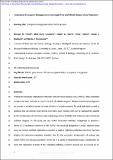Files in this item
Employing transposon mutagenesis to investigate foot-and-mouth disease virus replication
Item metadata
| dc.contributor.author | Herod, Morgan R | |
| dc.contributor.author | Loundras, Eleni-Anna | |
| dc.contributor.author | Ward, Joseph C | |
| dc.contributor.author | Tulloch, Fiona | |
| dc.contributor.author | Rowlands, David J | |
| dc.contributor.author | Stonehouse, Nicola J | |
| dc.date.accessioned | 2016-10-02T23:33:29Z | |
| dc.date.available | 2016-10-02T23:33:29Z | |
| dc.date.issued | 2015-12 | |
| dc.identifier | 230678457 | |
| dc.identifier | 63ae3182-f0d4-4a8d-b63d-de4368fd1a2c | |
| dc.identifier | 26432090 | |
| dc.identifier | 84955616011 | |
| dc.identifier | 000369521800007 | |
| dc.identifier.citation | Herod , M R , Loundras , E-A , Ward , J C , Tulloch , F , Rowlands , D J & Stonehouse , N J 2015 , ' Employing transposon mutagenesis to investigate foot-and-mouth disease virus replication ' , Journal of General Virology , vol. 96 , pp. 3507-3518 . https://doi.org/10.1099/jgv.0.000306 | en |
| dc.identifier.issn | 0022-1317 | |
| dc.identifier.other | ORCID: /0000-0003-0859-2867/work/31161339 | |
| dc.identifier.uri | https://hdl.handle.net/10023/9592 | |
| dc.description.abstract | Probing the molecular interactions within the foot-and-mouth disease virus (FMDV) RNA replication complex has been restricted in part to the lack of suitable reagents. Random insertional mutagenesis has proven an excellent method to reveal domains of proteins essential for viral replication as well as locations that can tolerate small genetic insertions. Such insertion sites can be subsequently adapted by the incorporation of commonly used epitope tags and so facilitate their detection with commercial available reagents. In this study, we use random transposon-mediated mutagenesis to produce a library of 15 nucleotide insertions in the FMDV non-structural polyprotein. Using a replicon-based assay we isolated multiple replication-competent as well as replication-defective insertions. We have adapted the replication-competent insertion sites for the successful incorporation of epitope tags within FMDV non-structural proteins, for the use in a variety of downstream assays. Additionally, we show that replication of some of the replication-defective insertion mutants can be rescued by co-transfection of a 'helper' replicon, demonstrating a novel use of random mutagenesis to identify inter-genomic trans-complementation. Both the epitope tags and replication-defective insertions identified here will be valuable tools for probing interactions within picornaviral replication complexes. | |
| dc.format.extent | 1925804 | |
| dc.language.iso | eng | |
| dc.relation.ispartof | Journal of General Virology | en |
| dc.subject | FMDV | en |
| dc.subject | Picornavirus | en |
| dc.subject | 3A trans-complementation | en |
| dc.subject | Transposon | en |
| dc.subject | Mutagenesis | en |
| dc.subject | QH301 Biology | en |
| dc.subject.lcc | QH301 | en |
| dc.title | Employing transposon mutagenesis to investigate foot-and-mouth disease virus replication | en |
| dc.type | Journal article | en |
| dc.contributor.sponsor | BBSRC | en |
| dc.contributor.institution | University of St Andrews. School of Biology | en |
| dc.contributor.institution | University of St Andrews. Biomedical Sciences Research Complex | en |
| dc.identifier.doi | 10.1099/jgv.0.000306 | |
| dc.description.status | Peer reviewed | en |
| dc.identifier.grantnumber | BB/K003801/1 | en |
This item appears in the following Collection(s)
Items in the St Andrews Research Repository are protected by copyright, with all rights reserved, unless otherwise indicated.

